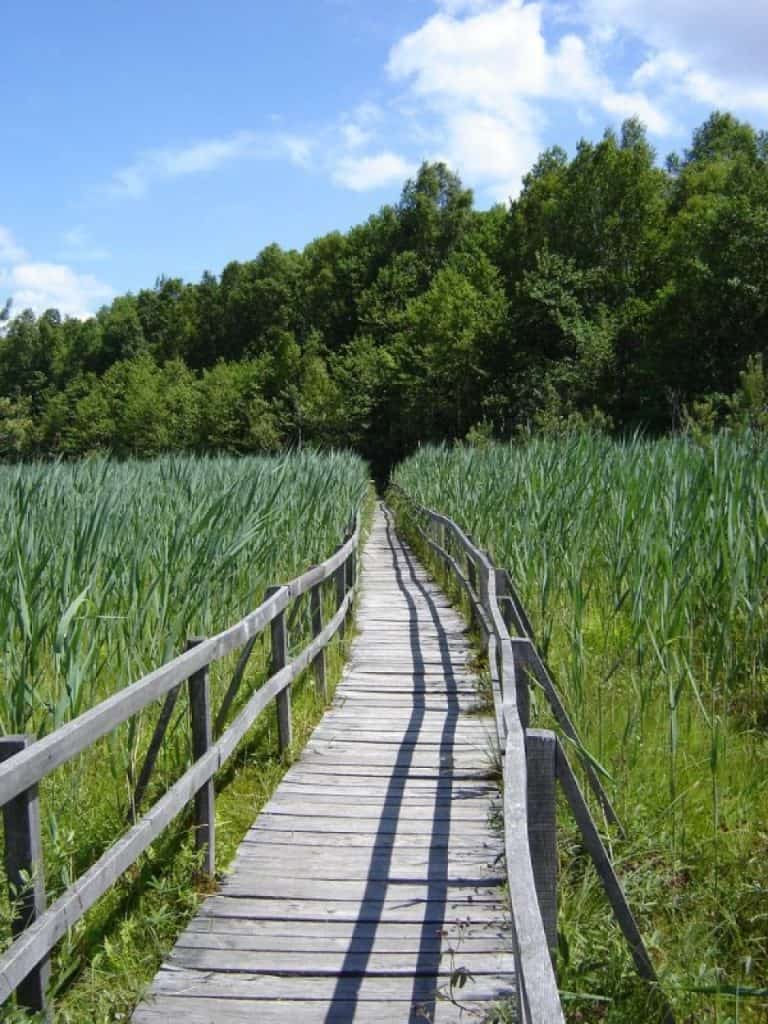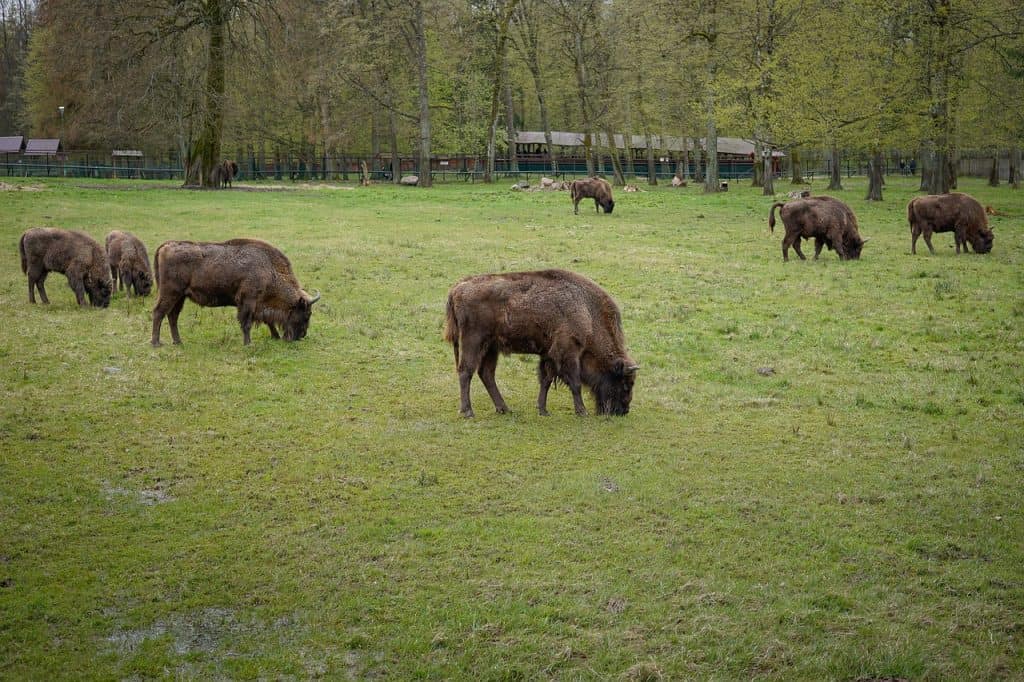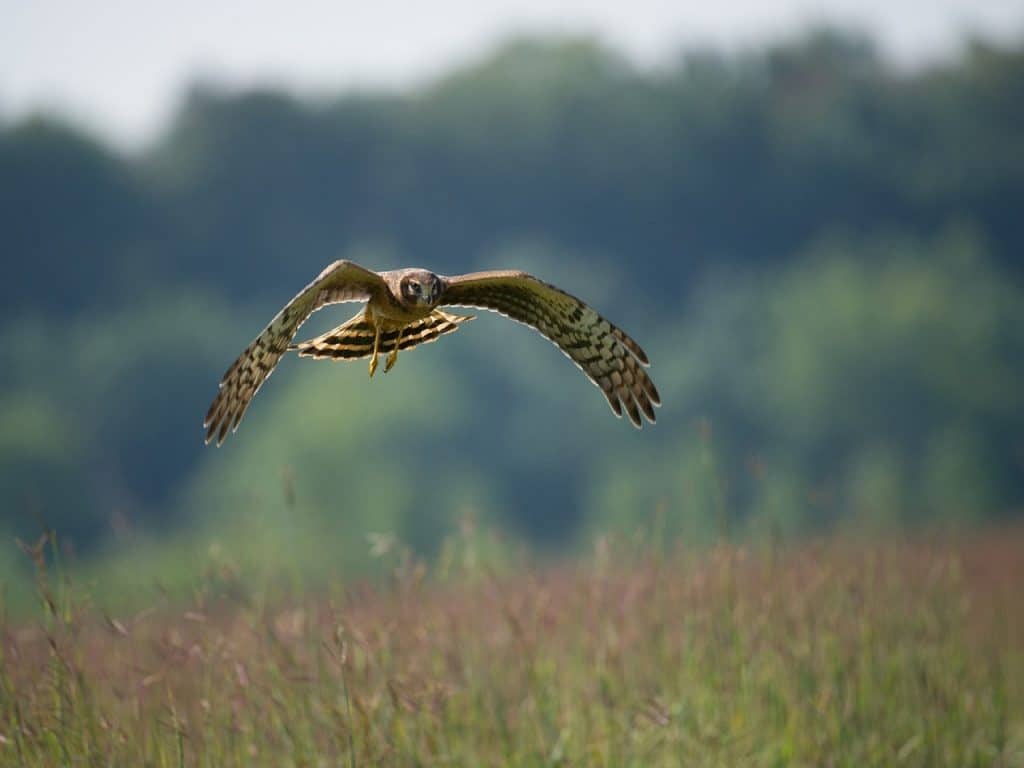The Poleski National Park is located in the central part of the Łęczyńsko-Włodawska Plain. It was created in 1990 and its current area is 9764,31 ha. It is one of three national parks in Poland (next to Biebrzański and Narwiański), which were established to protect water and peat bog ecosystems. Administratively, it is located on the border of the poviats of Łęczyński (Ludwin commune), Parczewski (Sosnowica commune), Włodawski (commune: Hańsk, Stary Brus, Urszulin) and Chełm (commune Wierzbica).

The Didactic and Administrative Center in Urszulin is the seat of the park’s management. Here is the “Pond Turtle Conservation Center”, where, from September to May, you can see small turtles. The building also houses a Tourist Information Point, a library and a projection room where films about the nature of Poleski National Park and Polesie culture are screened. Next to the Center is the Didactic Garden and the “Nature trail” path.
The Didactic and Museum Center in Załuczu Stary consists of a museum, a museum shed, the path “Żółwik” with a pond and a tourist roof with a place for a bonfire. The museum part contains interesting collections, which include exhibits: archaeological, ethnographic, historical and natural, as well as presenting the cultural heritage of Western Polesie.
The area of the park is characterized by a typical flat landscape. Its surface is flat, with a lot of lakes, ponds and swamps. In the park you can admire a substitute of tundra or lasotundra, furthest southwest in Europe. Almost half of the park’s surface is occupied by peat bogs and forest peat communities, surrounding the lakes: Dlugie, Karaśne, Łukie and Moszne, as well as large complexes of Bruska and Pieszolowski ponds. In the park’s coat of arms there is one of the representatives of numerous wetland birds occurring here – the crane. The Poleski National Park and the Sobiborski Landscape Park form the largest marsh turtle sanctuary in Poland. The elk population is also numerous here. In 2002, Poleski National Park was protected under the RAMSAR Convention as a wetland of international importance, especially as a habitat for waterfowl. It is part of the West Polesie Biosphere Reserve.

Tourist offer:
- nature paths: “Spławy”, “Dąb Dominik”, “Perehod”, “Insurgents Camp”, “Żółwik”, “On the trail of nature”, “Czahary”
- “Mietiułka” bicycle path,
- Polesie Horse Trail,
- observation towers: Durne Bagno, Bagno Staw, Bagno Bubnów, path “Perehod”, path “Insurgent Camp”,
- Museum of Poleski National Park in Załucza Stary,
- Tourist Information Point in Urszulin with souvenirs and publications about PPN,
- camping places, sheds with a place for a bonfire,
- bicycle rental (30 items).
Tourist traffic in the park is allowed throughout the year, from dawn to dusk. In the areas made available for group and individual sightseeing, you should only move on the marked routes of tourist and nature paths. Admission to nature paths is subject to fees (tickets available at the park’s facilities). Groups of more than 10 people, being on nature paths, are required to use the services of guides holding a permit issued by the PPN. Camping in the Park is possible only in designated places, with the consent of the park director and after paying the appropriate fee. Stay of organized groups should be reported to the Didactic and Administrative Center of Poleski National Park in Urszulin at least 2 days in advance.
Poleski National Park
Didactic and Administrative Center
ul. Lubelska 3a, 22-234 Urszulin
tel .: (82) 571 30 71, 571 30 72
e-mail: biuro@poleskipn.pl
http://www.poleskipn.pl
The article comes from the portal: http://www.turystyka-pojezierze.pl/


